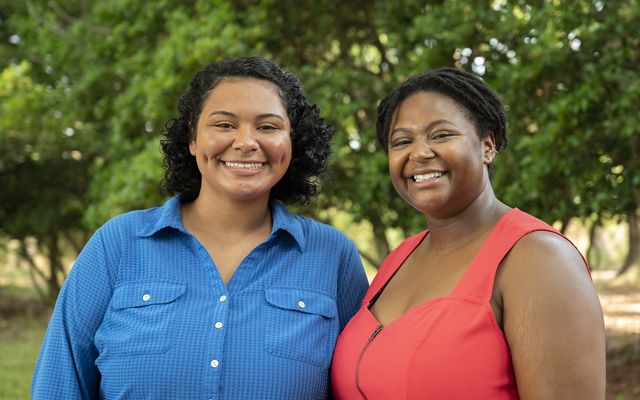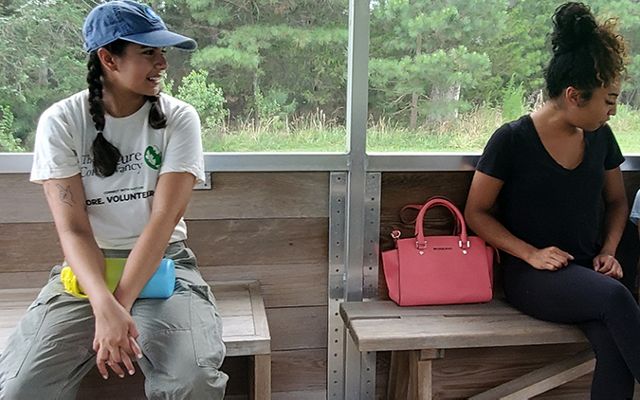Learning in Virginia
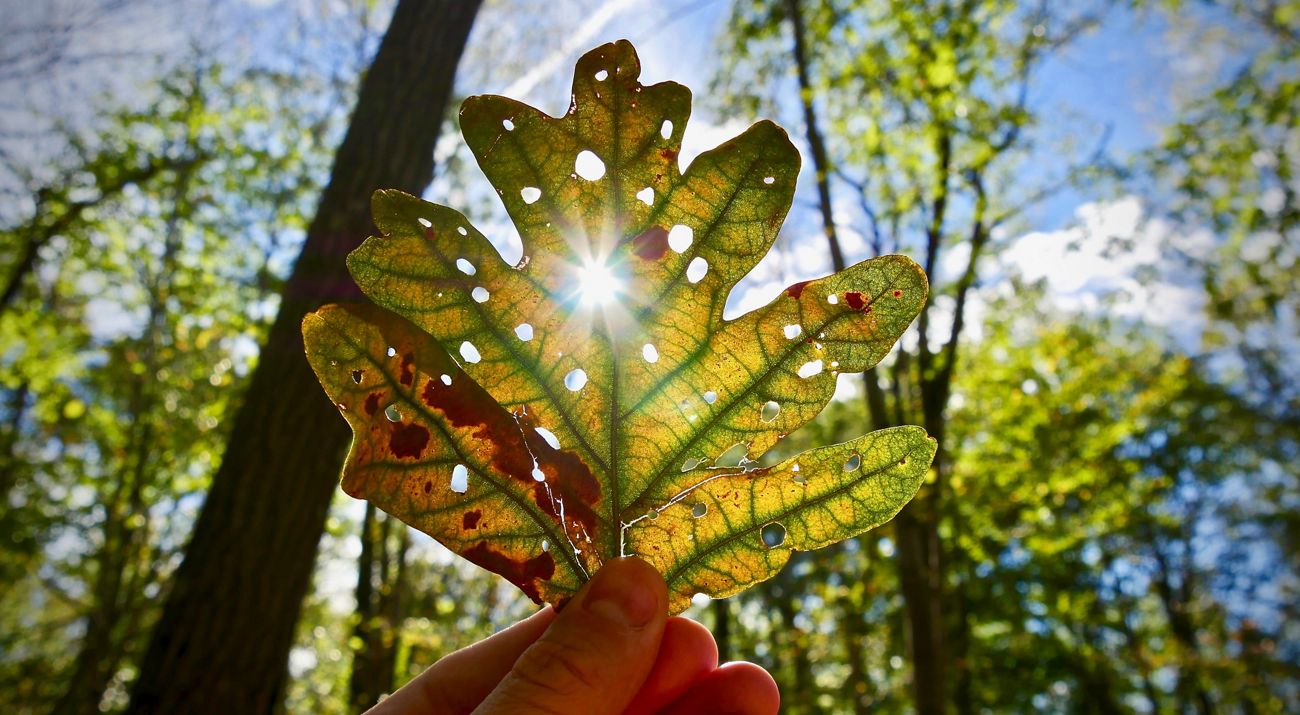
For some college students in Virginia, their classroom experiences may include getting hip deep in muddy muck, analyzing coyote scat or navigating drones over forest plots. It’s all part of our collaboration with colleges and universities across the Commonwealth, providing living laboratories for the next generation of conservationists.
Using the tabs below, explore these partnerships, learn more about our Short Term Experience Program, meet our intern cohort and discover how students are helping The Nature Conservancy (TNC) expand our outreach to communities and enrich our understanding of the places we protect.
Virginia’s Short Term Experience Program (STEP) has a goal to create pathways for people seeking to gain experience with a conservation focused organization. We see conservation as a broadly defined term that includes people working with our marketing, operations, philanthropy or other teams that are instrumental to our conservation mission. We strive to create an environment where people of all backgrounds, experiences and identities feel welcomed to participate in conservation.
For more information about the program, contact Taylor Fanelli, Short Term Experience manager, at taylor.fanelli@tnc.org or 804-728-0285.
-
- Positions typically open for applicants in late January.
- To find a position, visit TNC’s careers website and enter the job ID for the role you’re interested in.
- Submit a resume and cover letter by the stated deadline. You must apply for each role individually.
- Stay tuned for next steps – interviews usually start shortly after the position closes and final decisions will be made by late March.
- Need help applying? Visit our recruitment page or contact applyhelp@tnc.org
-
These positions are closed for this summer. Please explore our other TNC opportunities. Visit our volunteer page.
-
The Nature Conservancy is always looking for dedicated volunteers to help manage our preserves, take photos and videos for social media, assist with clean up days and more! Visit our volunteer page or email vavolunteers@tnc.org for more information.
Meet the 2025 STEP Intern Cohort
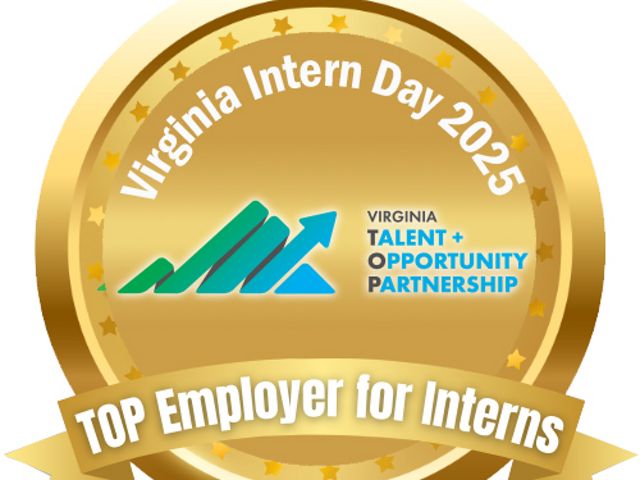
Top Virginia Employer for Interns
TNC Virginia has been named a Top Virginia Employer for Interns in 2025 by the State Council of Higher Education for Virginia!
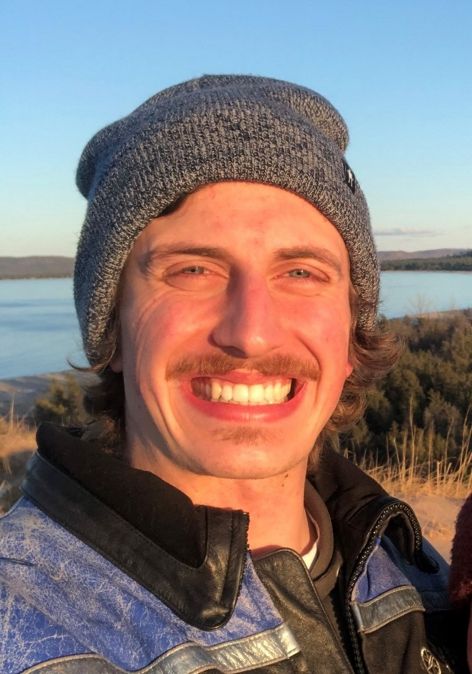
Bryn Lister
Stewardship Intern, Charlottesville, Land Protection
Bryn recently graduated from Virginia Wesleyan University, where he studied Earth & Environmental Sciences. Originally, they are from Lebanon, Pennsylvania, and they are greatly looking forward to getting more experience in the conservation field.
With the STEP program, he hopes to get to point out cool birds to his friends and to learn more about invasive plant species management. They are an avid music listener and player, and they also enjoy indoor rock climbing in their free time!

Ashley Altizer
Stewardship & Restoration Intern, Lexington, Allegheny Highlands
Ashley is from Harrisonburg, Virginia. She is an undergraduate student at Virginia Tech studying Environmental Science with a minor in Wetland Science.
"I am looking forward to monitoring the progression of oak saplings and various other vegetations as they respire from areas of prescribed burns. Forest regeneration and fire ecology are fascinating to me, so I am eager to contribute to the Warm Springs Mountain Restoration project," she says.

Hunter Rippon
Coastal Conservation Intern, Nassawadox, Volgenau Virginia Coast Reserve
Hunter is from Cape Charles on the Eastern Shore of Virginia. He is studying Fisheries Conservation at Virginia Tech. He is excited to learn more about the Chesapeake Bay in fisheries and conservation.
"I hope to gain more experience and knowledge to further my academic career and build relationships with the best fish conservation scientists on the East Coast. Some of my hobbies are fishing and working on vehicles," says Hunter.

Jennifer Garcia-Herrera
Pinelands Conservation Intern, Wakefield, VA Pinelands Program
Jennifer is from the Eastern Shore of Maryland. She studied Environmental Science and Policy at the University of Maryland, College Park, with a concentration in Wildlife Ecology and Management and a minor in GIS. Earlier in 2025, she worked in southern Georgia supporting prescribed fire operations to help restore longleaf pine ecosystems.
"I am excited to continue working with The Nature Conservancy and to deepen my knowledge of pineland ecosystems, fire ecology, invasive species, and preserve management," she says. In her free time, Jennifer enjoys going to concerts, collaging and shooting film photography.

Chloe Magallanes
Aquatic Storytelling Intern, Richmond, Virginia Aquatic Resources Trust Fund
Chloe is from San Antonio, Texas, a region known for its vibrant culture and community. She is studying Science in Biology at the University of Texas – Go Roadrunners!!! Chloe will be our STEP Aquatic Storytelling Intern, combining storytelling and science to spark meaningful change in conservation. In her spare time, she enjoys spending time with her family, friends and dog named "Stink."
"I’m always discovering and diving into new interests, so I consider myself a hobby hoarder! I love reading, crafting, collecting, travelling, music and so much more! Above all, my greatest interest lies in the wonder of animals. My greatest aspiration is to inspire others to care deeply about protecting wildlife and their ecosystems," says Chloe.
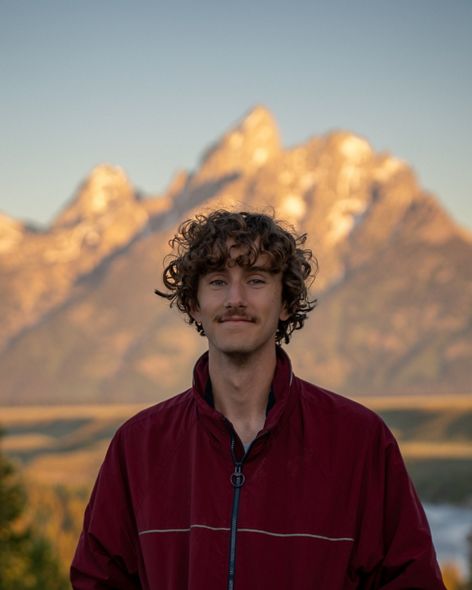
Lucy Ellis
GIS Wetlands Intern, Richmond, Chesapeake Bay Program
Lucy studies environmental science and GIS at Longwood University in Farmville, Virginia. She is eager to meet and work with the awesome people at TNC!
In her free time, she enjoys singing, reading, playing guitar and birding. She also has a cat whom she adores.
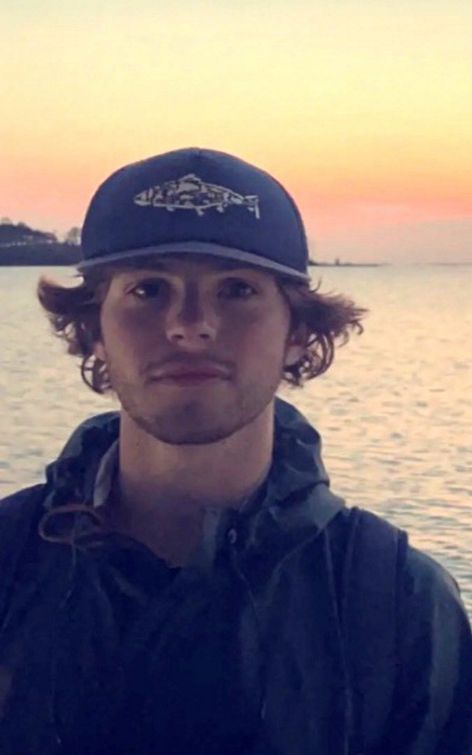
Amanda Hernandez
Invasive Mapping Intern, Charlottesville, Land Protection
Amanda was born and raised in the New York metro area and graduated with honors from NYU in 2024 with a Bachelor's in Biology. She has worked as a Natural Resource Technician at Death Valley National Park in California.
Amanda will be our Plant Mapping STEP Intern this summer. "I’m excited to learn about the plant life in Virginia and meet the other interns in the program. In my free time, I love hiking and reading!"

Bella Ravella
Lands and Lives Intern, Richmond, Marketing
Bella comes from a military family and moved around quite a bit growing up. She's lived in Arizona, Florida, South Texas and, most recently, Nashville, Tennessee. She is a Belmont University graduate, where she was a Global Honors student and received a BA in Faith and Social Justice with a minor in Photographic Studies.
"Between studying abroad in Belfast, Northern Ireland spring of my Sophmore year and also growing roots in Tennessee, I’ve developed friendships across cultures and engaged in research across disciplines," Bella says. Her work focuses on the intersection of history, theology, sociology, and the arts. "I am so excited to continue developing diverse research strategies and to share meaningful stories from across the state of Virginia. My passion is for both people and place! In my free time, I love to be on the water, in the woods or behind the cover of a really great book."
Lands and Lives
During the summer of 2022, three interns joined TNC to help expand our outreach, working on projects focused on more inclusive storytelling and interpretation of the lands we protect.
Basia Scott, from Greer, South Carolina, is studying anthropology at Wake Forest University. She was the summer 2022 communications intern for TNC’s Virginia Lands and Lives Project, researching historic and contemporary Indigenous communities in places where we work and exploring African Americans’ traditional connections to nature. Her capstone project, From the Sky to the Rivers, is a personal reflection on the complex connection between African Americans and the landscape.
Claudia Moncada, from Johnson City, Tennessee, has a Bachelor’s degree in Marine Science from the University of South Carolina and is currently pursuing a Master of Arts in Marine Science from the Virginia Institute of Marine Science (VIMS). She worked with the Volgenau Virginia Coast Reserve (VVCR) Program as the Spanish Language Conservation Outreach Intern during summer 2022 and developed Spanish language translations for Brownsville Preserve visitor materials and audio tour.
Vanessa J. Moses is an Eastern Shore native who grew up in Accomack County and graduated from Nandua High School in 2015. She continued her studies at the University of Virginia, graduating in 2019 with a double major in Environmental Thought & Practice and African American Studies. She was the VVCR Program's Brownsville History Intern researching the lives of enslaved and freed African Americans at Brownsville. She reflects on the enslaved individuals who built what is now Brownsville Preserve and the connections she found across time in her own family's history in her personal essay, Recovering the Past: A History that Mirrors My Own.
In the interview below, Basia, Claudia and Vanessa share their experiences and what nature and conservation means to them.
How did you first find out about the internship? How familiar were you with TNC—if at all—and what was your perception of the organization or conservation work in general?
BASIA: I found out about the internship on LinkedIn. I was not at all familiar with TNC and had very baseline perceptions of conservation. I understood the need for it, but not necessarily how I fit into the mission.
CLAUDIA: I hadn’t heard much about TNC at the time, but VVCR Program Director Jill Bieri is a VIMS alumna. I was encouraged to reach out to her about any potential summer opportunities in the area. I had heard that there was a large Spanish-speaking population on the Eastern Shore of Virginia and was interested in possibly working with them. Jill connected me with the Outreach and Education team, Margaret Van Clief and Jenny Miller, and we worked together to come up with projects I could complete during an internship. I’ve been interested in conservation work for most of my life, so TNC seemed like a great fit for me to grow professionally.
VANESSA: I found out about the internship from a local ad in the Eastern Shore Post. My mom took a picture of the ad and sent me the photo while I was living in Baltimore. I became familiar with The Nature Conservancy because I’d had two former teachers who worked for TNC. My high school biology teacher, Gerard Hennessy, was a former director of the Virginia Coast Reserve (1974 - 1984). My college water sustainability professor, Brian Richter, worked to conserve the Colorado river pike in his former role as Director of TNC's Freshwater Program.
Why you were interested in this internship?
CLAUDIA: Science communication, and specifically bilingual science communication, is very important to me. I was interested in an internship with TNC because it’s an international nonprofit that does some really important work, and VVCR does a lot of work with the community—like coastal resilience planning and habitat restoration—that I find really awesome. Once we settled on working with the Spanish-speaking folks on the Shore, I was very excited to be able to lay the groundwork for something TNC and VVCR haven’t really done before.
VANESSA: This opportunity through TNC was unique and long overdue. As an organization that buys land to conserve species and prevent further degradation, it was an impactful step for TNC to focus on the first stewards of the land, the enslaved people who changed and worked the landscape of Brownsville. This historical research included both of my passions, environmental stewardship and diversifying the conservation world. In addition, I thought it would be an opportunity to understand and contextualize my own family history, as I have ancestors that have been on the Shore since the early 1800s.
BASIA: I absolutely love history and telling stories. So having a chance to focus on lands and lives, exploring stories and conditions through the lens of place was incredibly interesting to me. Additionally, as an anthropology major, this type of internship seemed like a practical application of my area of study.
Talk about your role with TNC and the projects you've been working on.
VANESSA: My role was to uncover the overlooked history of enslaved and freed African American individuals who were members of the Brownsville and Nassawadox communities. Some may view Brownsville as just a historic site, but it was more than just a home. It was a plantation owned by the Upshur family, and, as such, it has a complicated and difficult history of enslavement and inequity built into its foundation. While TNC has some established connections to the former owners of Brownsville, it is my responsibility to fill in the gaps of knowledge about the first stewards of this land: the enslaved laborers and their descendants.
By transcribing the white Upshur family property tax and estate documents, housed in William & Mary’s state archive, I have created a family tree of approximately 80 enslaved people living at Brownsville between 1782 and 1855. Additionally, I used census records, online genealogy programs (like Ancestry.com and Family Search), Northampton courthouse proceedings, birth and mortality schedules, Free Black records and Civil War registrations to illuminate details about these individuals’ lives.
BASIA: I had two major projects over the course of the summer. One was more of an internal resource, a spreadsheet that documented the historical Indigenous presence in the places that TNC protects within Virginia. It also provided contemporary groups to consult in collaborative conservation and interpretation efforts.
Alongside this spreadsheet, I created a companion document that gives guidance on the purpose of the document, offers tips for producing land acknowledgments, and explores the importance of being mindful of what type of language is used when speaking of/about Indigenous groups. This project serves not only as a visual representation of Indigenous displacement within Virginia, but also as a starting point for land acknowledgments, conversations and more inclusive conservation.
Additionally, I am also working on a final project, an article that explores the complex relationship that the African American community has to nature—and misunderstandings of that relationship. Often, it seems that people both outside and inside the community feel that nature (and therefore conservation) is not for Black Americans, but through the examination of our past, we can find quite quickly that nature has been an underlying part of oppression and freedom, serving as a canvas for our story.
CLAUDIA: The main deliverables I produced for VVCR during my internship were a translated recording of the William B. Cummings Birding and Wildlife Trail audio guide, transcriptions for the audio guide in both English and Spanish, an updated translation of the printed Spanish trail guide and translated text for the island use guidelines.
The big community engagement event I planned was for Latino Conservation Week, a nationwide event from the Hispanic Access Foundation that aims to get more Latino and Spanish-speaking people out in nature. We held a picnic lunch and bilingual wagon rides on July 23 at Brownsville Preserve and just encouraged people to come out to the trail with their families and enjoy nature. Translated materials pertaining to the trail were ready for the beginning of the week as well, and self-guided tours were encouraged all week long.
In addition to the logistical event planning, I also wrote up advertising materials to be printed in the Shore Daily News and the Eastern Shore Post newspapers and websites, as well as two scripts for radio advertisements that would be played on Radio Amigo, a national Mexican radio station that plays in the area and has local show hosts. Beyond this main project, I also assisted with some high school field trips and classroom visits, as well as helped run the nature camp for 9-12 year old kids in August.
What were the top highlights and challenges of your intern experience? Any surprises?
BASIA: My highlight was getting to visit the Eastern Shore of Virginia. I had never been there before, but I got an amazing opportunity to meet other interns, get closer with my team and learn more about the historical contexts of the Brownsville Preserve.
Another highlight and challenge wrapped up into one was my Indigenous Lands Project, which took a lot of cross referencing, research and time to compile, but was also incredibly satisfying to complete because this type of work can benefit TNC and the Indigenous communities in the area.
CLAUDIA: The main challenge this summer was figuring out how best to reach the Spanish-speaking community in the area and ensure that they knew Brownsville was accessible to them. With this being the first real attempt to engage with this community, we had no idea what to expect in terms of attendance for our event or when might be the best days and times to put on engagement events like this one. We learned a lot through this first event, and I really hope that more events like this one continue to happen at VVCR and other TNC offices.
A pleasant surprise was how much it really means sometimes when you speak to someone in the language they are comfortable with—one student from our high school field trips out to the Barrier Islands recognized me out on the street after I had done some interpretation for her in Spanish when it became obvious that she preferred the language over English. Moments like that really highlight the importance of work like this!
VANESSA: Being able to join my coworkers as they conducted work in the field was the highlight of my summer internship. I’ve finally stepped foot on a barrier island—something few Eastern Shore locals have experienced. I swam in eelgrass beds and collected water samples to study with students.
Something that surprised me while conducting this historical research was little documentation of Freed Black people being married at young ages. Often, I’ve heard that “people got married earlier” or “people died younger” in the past. To date, I have not encountered people who married before age 18. It is important to note that in the 18th and 19th centuries, individuals were not considered to be an adult (i.e., could not accept inheritances) until age 21, and sometimes later for women. Additionally, accurate dates of birth and the subjectiveness of Census and marriage officials could play a role.
What’s next for you? And how do you hope your internship will help with or affect your plans or goals?
CLAUDIA: I'm returning to VIMS to finish up my last year of the MA program. I’ll graduate in spring 2023 and hope to either return to TNC or find similar work with another nonprofit. This internship has solidified to me that this is a career path I’d like to pursue, and I am certain the connections I have made here will be helpful to me in the future, regardless of which path I choose.
After concluding my internship with TNC, I plan to pursue a career in environmental education. A job as an interpreter with the National Park Service seems like a good fit for someone who loves talking and giving tours (I was an orientation leader and Rotunda ambassador while at UVA). However, I have gotten a taste of the sweet nonprofit life, so I would be happy to stay with TNC or a similar organization if the opportunity arises.
BASIA: I am going back to Wake Forest for my junior year of college, and I definitely have a new lease on where my degree can take me in the future because of this internship. I really enjoyed my time with TNC because of the welcoming environment and also because of their dedication to bridging the gaps made by historic inequality. As I look forward, I hope that this experience will allow me to find new avenues of storytelling for communities and their senses of place, whether that be in the nonprofit world, academic settings or any other field.
Quote: Claudia Moncada
This internship has solidified to me that this is a career path I’d like to pursue, and I am certain the connections I have made here will be helpful to me in the future, regardless of which path I choose.
Claudia Moncada
What do words like nature or conservation mean to you? Have your ideas changed in any way over the course of your internship?
BASIA: Nature is such a vast word, but the essence of the word means Earth to me. It means dirt, grass, trees, animals and water. It is an overarching concept that defines the place we live, even if we have over time separated our actual dwelling places from it with walls and roofs.
Conservation seems more loaded, as conservation efforts have seen many different phases. But to me it means caring about the world, and the beings in it, enough to protect them. Before this internship, I would have had a harder time describing what conservation meant to me, because I did not have a lot of experience with it. However, after seeing conservation at work on Virginia’s Eastern Shore, it is clear to me that conservation is about everyone and everything, including the community, the animals and the plants.
CLAUDIA: I think, if anything, my time with TNC this summer has taught me that nature and conservation can be as big or as little of a part of your life as you’d like to make them. There are people whose entire lives revolve around the terms, like our birding team or the migrant farmers that work the fields in the area, and there are people on the Shore who have lived here their entire lives and had no idea they could come walk Brownsville Preserve or even that TNC is doing work here. In making the effort to meet community members where they are, I think more people will be able to decide for themselves what they would like nature and conservation to mean, and that’s a choice that everyone deserves to be able to make.
VANESSA: Nature has always been reminiscent of home to me, being a Shore native. To me, nature means sea breezes, shade under walnut trees, marsh mud, tall grasses speckled with bright chicory flowers along the back roads, greenhead bites and cookouts. Through this internship, conservation has come to mean a preservation of stories yet to be told. It means preserving the real story, and accepting the brutalities and misfortunes of that reality. I have always felt that people and nature are intertwined, and this project seeks to further examine and illuminate that fact.
Interviews conducted by Daniel White, Senior Conservation Writer. They have been edited for length and clarity.
College and University Partners
Explore the page below to take a closer look at specific projects and partnerships and get more details about our work and collaborations. Expand the list of partners, which includes some of the schools we have worked with, both in the Commonwealth and beyond.
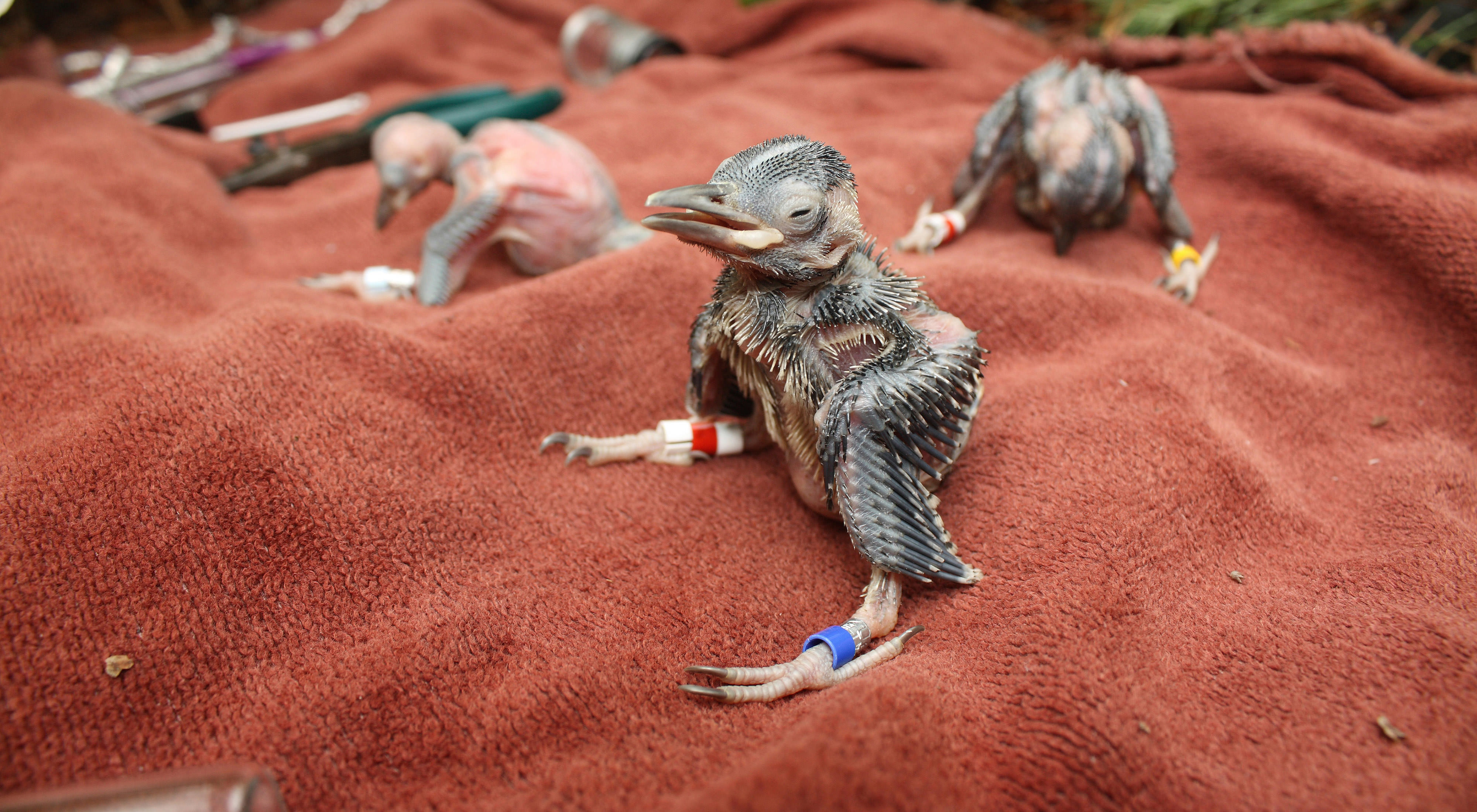
College of William & Mary
Center for Conservation Biology
At Piney Grove Preserve, TNC is working to restore the longleaf pine of Virginia's founding forest and the northernmost population of the endangered red-cockaded woodpecker, Virginia's rarest bird. The Center for Conservation Biology (CCB) has been a key partner in this effort for more than two decades.
Biologists from CCB monitor breeding activity and complete two population censuses each spring and fall to document productivity and allow for banding of all red-cockaded woodpecker (RCW) individuals within Piney Grove. Starting from just two breeding pairs, CCB has documented modern-day highs at Piney Grove for the numbers of breeding pairs and fledglings.
CCB also monitors RCW populations that have moved into the neighboring Big Woods Wildlife Management Area as well as a population in the Great Dismal Swamp National Wildlife Refuge established from birds reintroduced into the refuge in 2015.
On the Eastern Shore, the Volgenau Virginia Coast Reserve also has a long history of collaboration with CCB, partnering to implement ongoing monitoring and management programs, including a 5 year coastal plain survey for all colonial waterbirds, Whimbrel Watch, historic aerial shorebird surveys, and peregrine towers as well as identifying and prioritizing pressing conservation, management and research requirements related to our work with whimbrel, oystercatchers and red knots.
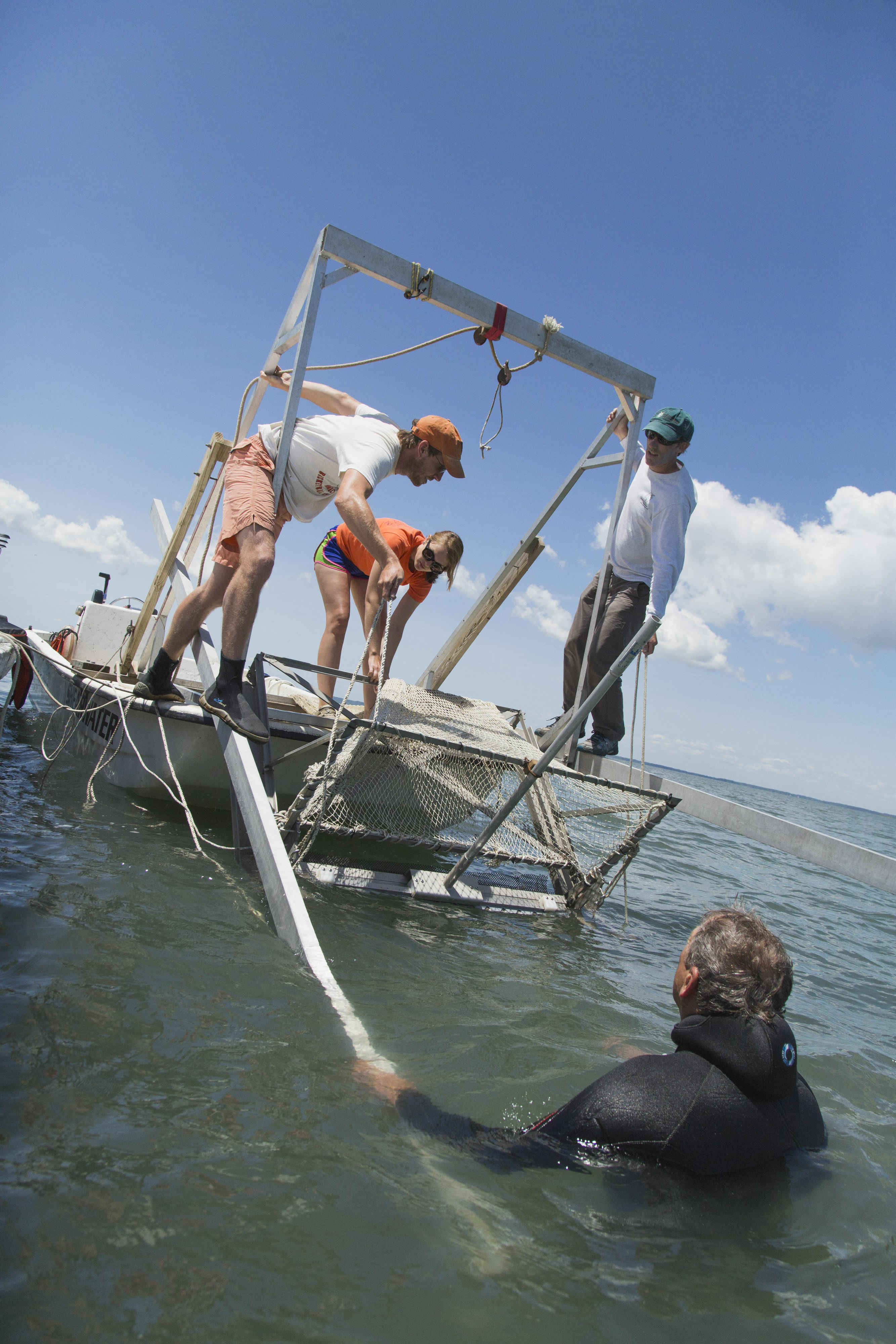
College of William & Mary
Virginia Institute of Marine Science
TNC and Virginia Institute of Marine Science (VIMS) are both partners in the Seaside Heritage Program which began funding for the large-scale, successful eelgrass and oyster restoration efforts that continue today.
Our most notable partnership with VIMS centers on eelgrass, the largest seagrass restoration project in the world. The Volgenau Virginia Coast Reserve (VVCR) and VIMS collaborate together on annual seed collection, curing and storing of seeds in VVCR’s facility in Oyster and seed planting and monitoring.
Scallop restoration and reintroduction represents another significant area of effort. We work closely with VIMS’ Eastern Shore Laboratory (ESL) on techniques for growing scallops at VVCR’s facility in Oyster along with field monitoring studies to track scallop survival.
VVCR’s Parramore Island, one of 14 undeveloped barrier and marsh islands, is regularly used by ESL staff and VIMS faculty for educational trips.
TNC has also worked with VIMS on a Chesapeake Bay aquaculture project aimed at quantifying the ecological benefits of oyster aquaculture to the bay. VIMS provided the scientific expertise to measure the water quality impacts and benefits to help answer the question, can oyster aquaculture make the bay cleaner, faster?
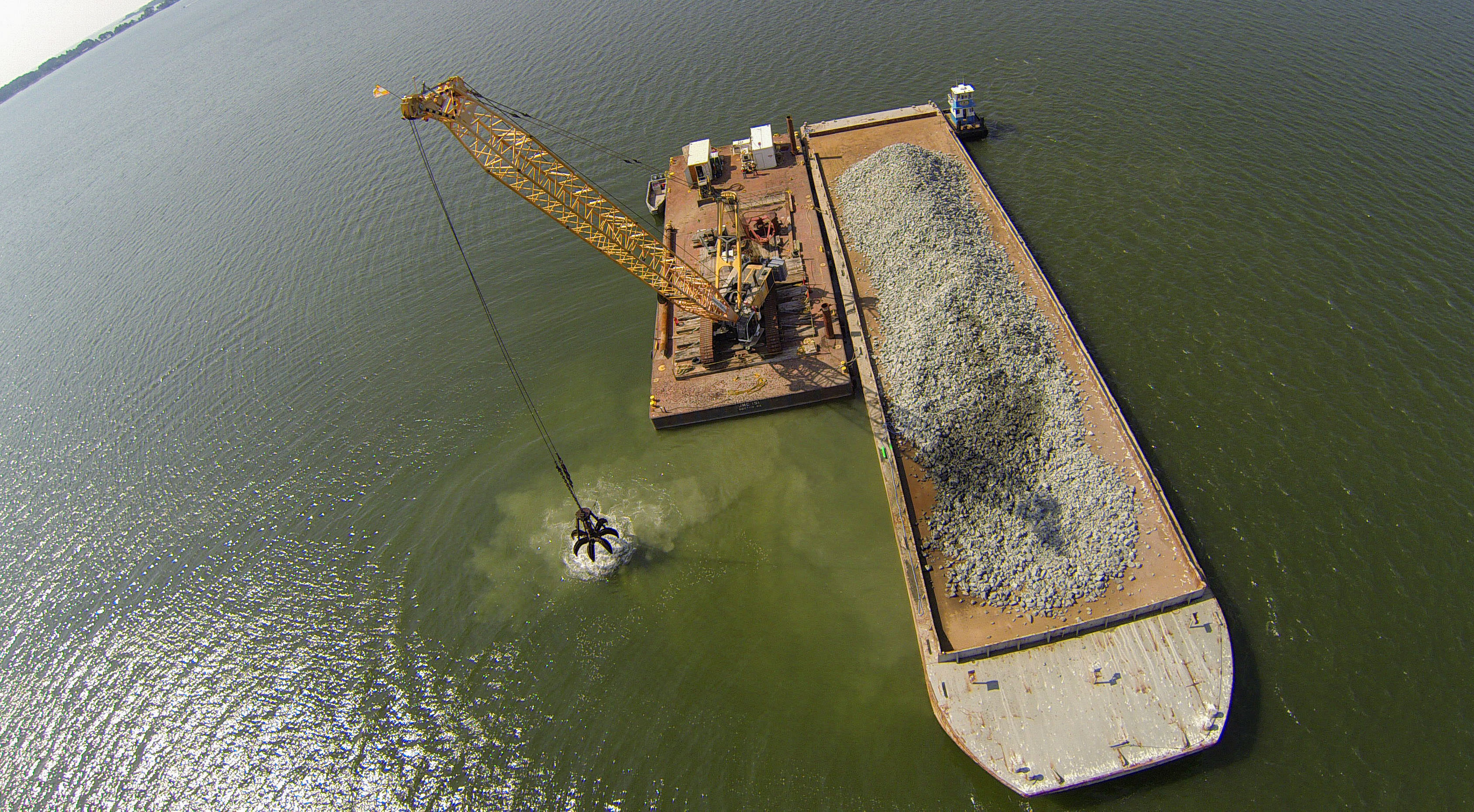
Virginia Commonwealth University
From Mountains to Coast
VCU's field research station, Rice Rivers Center in Charles City County, is the site of a TNC held easement and a Virginia Aquatic Resources Trust Fund (VARTF) wetland and stream mitigation project.
This longstanding partnership with VCU provides great educational and research opportunities, including a NOAA funded project administered by VCU's Center for Environmental Studies to assess fish production around newly restored oyster reefs in the Piankatank River. Nikki Rovner, TNC Virginia's associate state director, has also taught a graduate level natural resources legislation class in the Center for Environmental Studies.
Our Allegheny Highlands program has also collaborated with VCU to conduct research in western Virginia, including avian studies to track the migration of golden-winged warblers and cerulean warblers as well as developing proposals for land management studies for the benefit of golden-winged warblers and other wildlife.
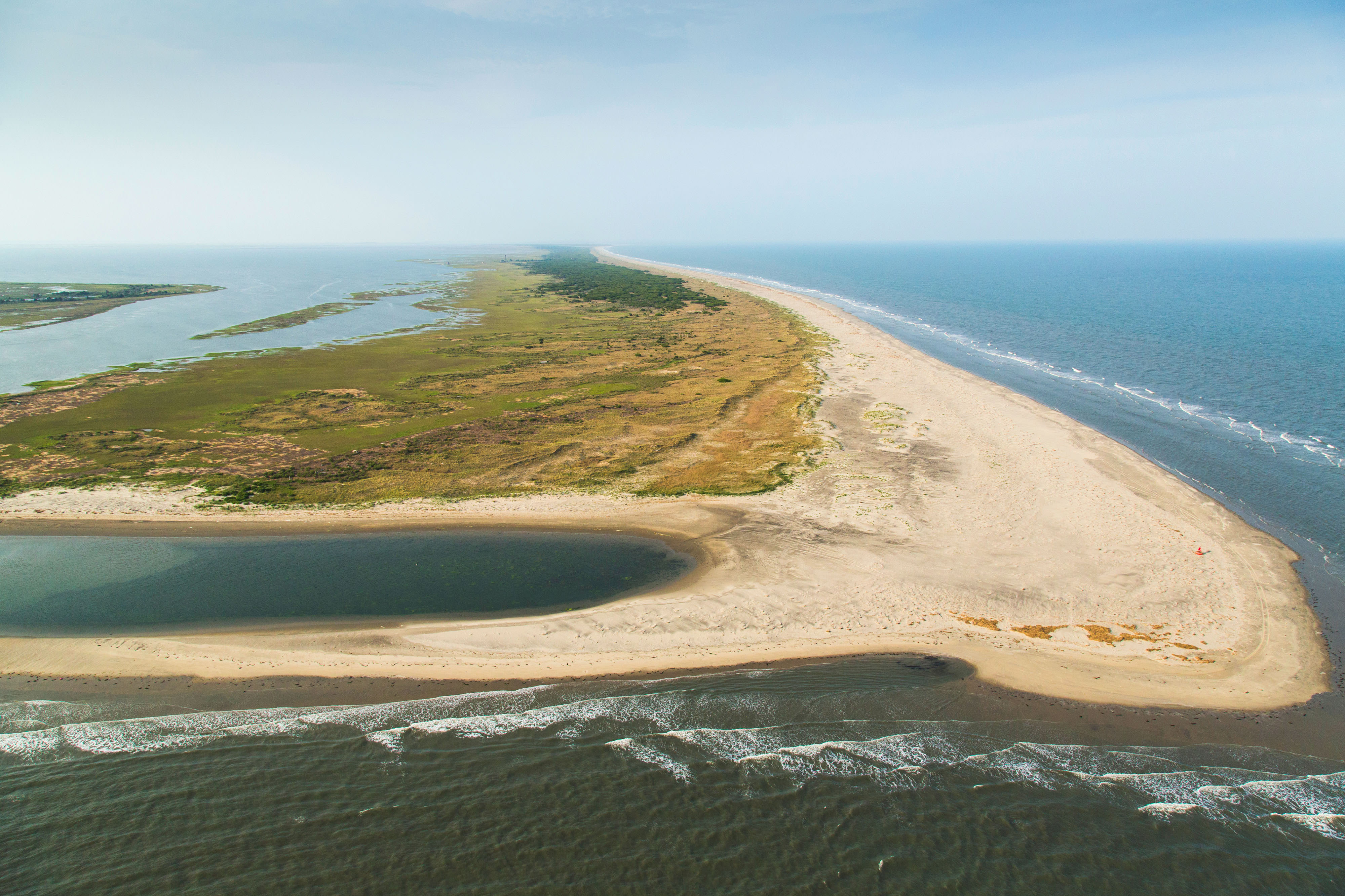
University of Virginia
Long Term Ecological Research Program
The largest and longest-lived ecological network in the United States, Long Term Ecological Research (LTER) brings together a multi-disciplinary group of scientists to study, document and analyze environmental change at sites across the country. The LTER program at the Virginia Coast Reserve began in 1987 and is administered through the Department of Environmental Sciences at the University of Virginia.
LTER provides long-term data demonstrating changes to a myriad of natural systems located within VCR—salt marsh, seagrass, upland forests and barrier islands—that may be affected by climate change disturbances and how that may affect both human and natural communities on the Eastern Shore. Our partnership includes:
- Determination of research priorities within the Virginia Coast Reserve, with input from scientists and graduate students from all LTER institutions (including Virginia Commonwealth University, Old Dominion University, Virginia Institute for Marine Science and the University of North Carolina)
- Data dissemination (i.e. using LTER models and data for creation of portions of the Virginia Eastern Shore Coastal Resilience Tool)
- Oyster restoration and wave attenuation studies
- Recruitment of volunteers for field studies and restoration
- Issuing and managing research permits for all aspects of LTER work that occur on TNC properties, including Brownsville Preserve and the barrier islands
- Co-lead professional development courses for teachers and educators
- Working collaboratively to manage the cross-island trail, dock and other infrastructure on Hog Island
In Charlottesville, UVA professors have used the Virginia Aquatic Resources Trust Fund’s (VATRF) Meadow Creek project as a study site for their courses. Meadow Creek is one of the largest urban stream restoration projects completed in Virginia to date. UVA graduate students have conducted research at the site and VARTF has partnered with a UVA professor on a grant from the Landscape Architecture Foundation to study the economic and social benefits of the restoration.
Virginia Tech
The Virginia chapter has relationships with Virginia Tech across many of our landscape and conservation programs.
TNC's Allegheny Highlands program works closely with faculty and students from Virginia Tech to facilitate research and provide access to the chapter's 10,000 acre Warm Springs Mountain Preserve.


Recent and ongoing research has included studies to determine the distribution and habitat use of eastern spotted skunks in western Virginia; a comprehensive bat research and monitoring program on Warm Springs Mountain Preserve and the adjacent George Washington National Forest (funded by the national Joint Fire Science Program); estimating population abundance and determining habitat use and movement patterns of coyotes (Canis latrans) in the Warm Springs Mountain Preserve and surrounding National Forest, state, and private lands in Bath County; and studying the predation and scavenging behavior of bobcats, bears, and coyotes on white-tailed deer and the implications of that behavior on white-tailed deer populations.
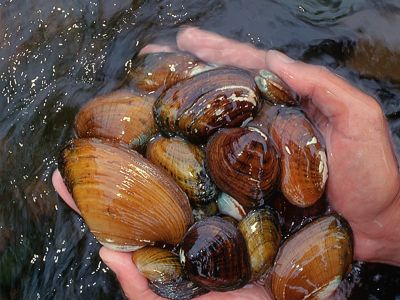
In southwest Virginia, our Clinch Valley program works to protect habitats in the Clinch River that support some of the world’s most diverse assemblages of freshwater mussels. TNC recently embarked on a significant ramp-up of mussel-augmentation capacity in partnership with Virginia Tech and the Virginia Department of Game and Inland Fisheries (VDGIF).
Thanks to an approximately $200,000 grant from the National Fish and Wildlife Foundation (NFWF) and matching resources from the partners, TNC will collaborate with the Virginia Tech Freshwater Mollusk Conservation Center and VDGIF’s Aquatic Wildlife Conservation Center to produce 100,000 juvenile mussels—an approximately six-fold increase—for release into the Russell County, Virginia, reach of the Clinch River.
The grant will also support a cutting-edge new juvenile mussel transformation technique that, instead of requiring live fish hosts, uses in-vitro media. If successful, this innovation may enable far greater mussel production than previously possible. This three-year project commenced April 1, 2020.
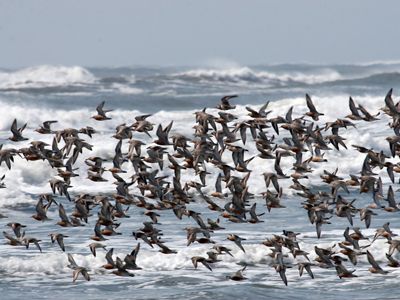
On the Eastern Shore, the Volgenau Virginia Coast Reserve (VVCR) program has worked with Virginia Tech’s Shorebird Program since 2006 to further our understanding of red knot ecology on the Virginia barrier islands.
Work led by Dr. Jim Fraser and Dr. Sarah Karpanty has shed considerable light on the importance of coastal habitats at VVCR for the rufa subspecies of red knot. We continue to support their annual efforts to sample the islands for red knot prey availability.
VVCR has also collaborated with Dr. Karpanty on several projects through her role with UVA’s LTER program including investigating mammalian predator population dynamics and implications for island, and the use of drones for predator and shorebird management.
The Virginia Aquatic Resources Trust Fund (VARTF) is providing multiple years of hydrology data from several of VARTF's coastal plain and piedmont wetland sites. The data will contribute to a project led by Dr. Lee Daniels, Dept. of Soil Environmental Science, to create an advanced database and modelling software to identify target hydroperiods, or the period of time during which a wetland is covered by water.
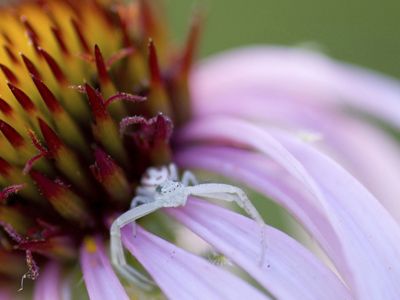
Virginia's Director of Land Management and Fire Program Manager, Sam Lindblom, has served as a project mentor for Dr. Sarah Karpanty’s senior capstone class in Virginia's Tech's Department of Fish and Wildlife Conservation.
2019's group studied smooth coneflower at TNC's Den Creek and Walnut Hill Preserves in Montgomery County, reviewing the existing management plans for the two sites and conducting field work to measure canopy cover at both sites.
2020's group developed a feral hog survey methodology for volunteers to use on TNC's Virginia preserves. We don’t (yet) have hogs, but they are known to be on nearby properties in Montgomery County. Being able to detect them early will increase our chance of success with control efforts.
-
- Blackburn College (Illinois)
- Christopher Newport University
- College of William & Mary
- Colorado State University (Colorado)
- Cornell University (New York)
- Dickinson College (Pennsylvania)
- Lincoln Memorial University (Tennessee)
- Old Dominion University
- Piedmont Virginia Community College
- Randolph Macon College
- Rochester Institute of Technology (New York)
- University of Richmond
- University of Mary Washington
- University of Vermont (Vermont)
- University of Virginia
- University of Wisconsin-Madison (Wisconsin)
- Virginia Commonwealth University
- Virginia Tech
We Can’t Save Nature Without You
Sign up to receive monthly conservation news and updates from Virginia. Get a preview of Virginia's Nature News email
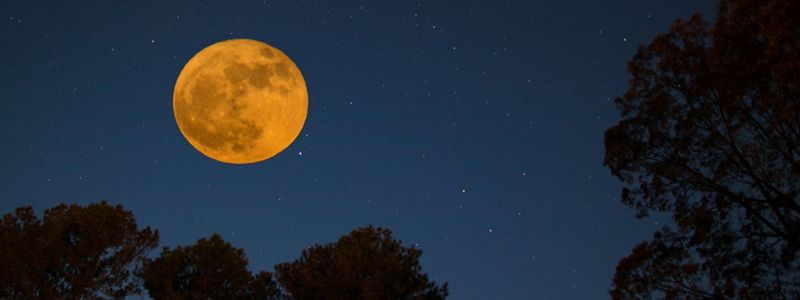
Recent Stories
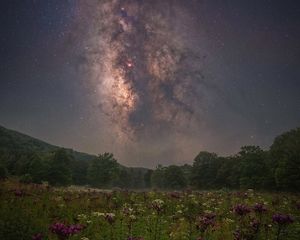
From the Sky to the Rivers
Virginia Lands and Lives Intern Basia Scott reflects on the complex connection between African Americans and the landscape.
By Basia Scott | Dec 28, 2022

Recovering the Past: A History That Mirrors My Own
VVCR History Intern Vanessa Moses reflects on the enslaved individuals who built what is now Brownsville Preserve, and finds connections across time in her own family's history.
By Vanessa Moses | Apr 04, 2023
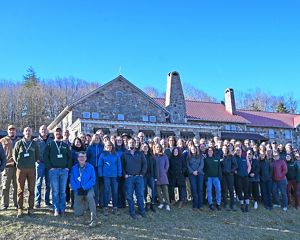
TNC Virginia Staff and Trustees
Meet the people who are working to create lasting solutions in Virginia and around the world.
Jun 01, 2021
